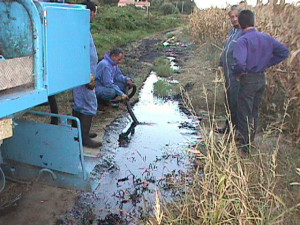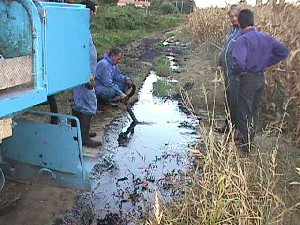A leak occurred on a pipe running between a coastal depot and a power plant storage site (pipe length: 7,430 m, depth: 2 m, year of construction: 1975, thickness: 5.56 mm, steel composition) during the transfer of heavy fuel no. 2. The operating procedure called for rinsing with light fuel oil (LFO) under 10 bar, transferring heavy fuel no. 2 at 85°C under 38 bar, and rinsing again with LFO under 20 bar. On 17th September, this process was undertaken. The next day, depot employees observed the presence of fuel oil in a field; they repeated the rinsing step, activated the emergency plan and injected water. The corn field was polluted (700 m²; depth < 3 m). After scouring and examination, the pipe at the level of the leak (weld) displayed: corrosion in spots (undoubtedly due to a briny water environment, caused by either the rise of seawater into the groundwater or the facility's cathodic protection, which between 1975 and 1993 was inoperable), a significant loss of thickness, and local tearing. The presence of oxides might have indicated a previous leak (pipe maintained with LFO when idle). A metallographic appraisal was requested.
The volume of leaked LFO was estimated at 650 m³. A number of technical measures were adopted: safe pipe operations, pumping of the spread product, stripping of polluted ground, reliance on experts for groundwater decontamination (8 boreholes, 3 piezometers installed). The inspectorate also requested an inspection of the entire pipeline and an improved monitoring and intervention plan.
Download the detailed report in .pdf format (143 Kb)





